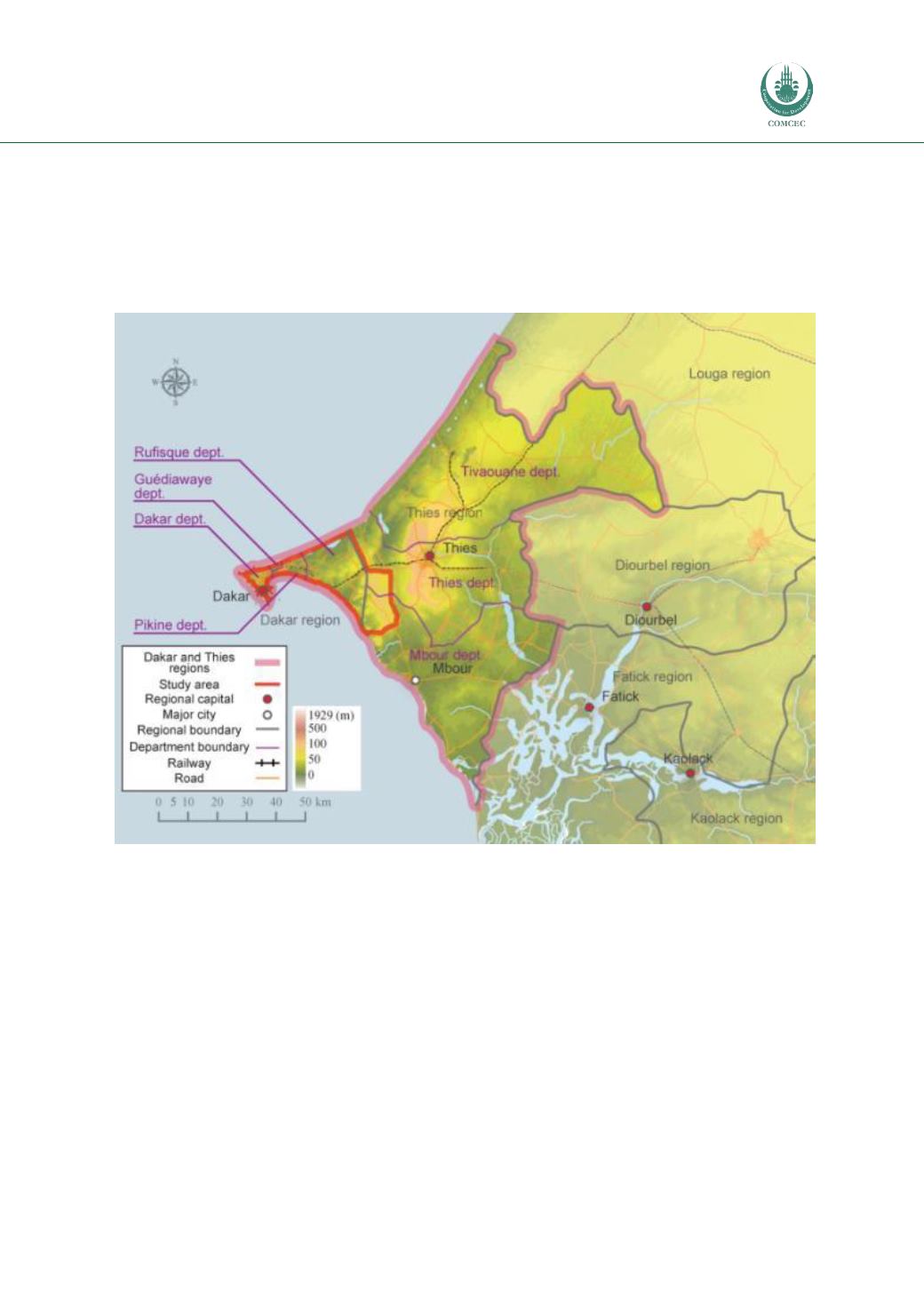

Urban Transport in the OIC Megacities
121
Land use and urban form
The administrative region of Dakar is divided into four departments: Dakar, Rufisque, Guediawaye
and Pikine (Figure 54). The biggest part of the population of the region is concentrated in the
department of Dakar (42%) while Guediawaye is the densest department with 21,248 residents per
km
2
, compared to the average density of 433 residents per km
2
.
Figure 54: The administrative region of Dakar and the four departments. The study area shown on
the graph is that of the 2025 Urban Master Plan (JICA, 2014).
The majority of the country’s administrative, military, economic and industrial activity was gradually
concentrated in Dakar and created unprecedented needs to for housing and transport which have not
been properly addressed by a series of urban masterplans adopted by the city’s planning authorities
in 1748, 1967, 1980 and 2000. Dakar is the engine of Senegalese economy and the centre of national
and international trade. The city is home to 46% of the administrative functions of Senegal, 97% of
transport and commercial workers, 96% of bank workers, 95% of industrial enterprises and 87% of
permanent employment positions. In addition, Dakar has the only major airport in the country and
the only major port as well as the only international train line to Bamako. It is not surprising that
Dakar produces 55% of the national GDP and 25% of all employment. However, unemployment levels
in the city remain high at almost 12%, with an additional 60% of the citizens working in the informal
sector.
All the services in the region of Dakar are concentrated in the department of Dakar and more
specifically in the Plateau area, the colonial centre of Dakar in the southwest of the Cap Vert peninsula.
Among the services located in the Plateau are the Presidential Palace, the majority of the Ministries
and Embassies, international and national businesses, the industrial zone, the main hospitals, many
modern and traditional markets, the port and the main train station. However, it is noted that since

















